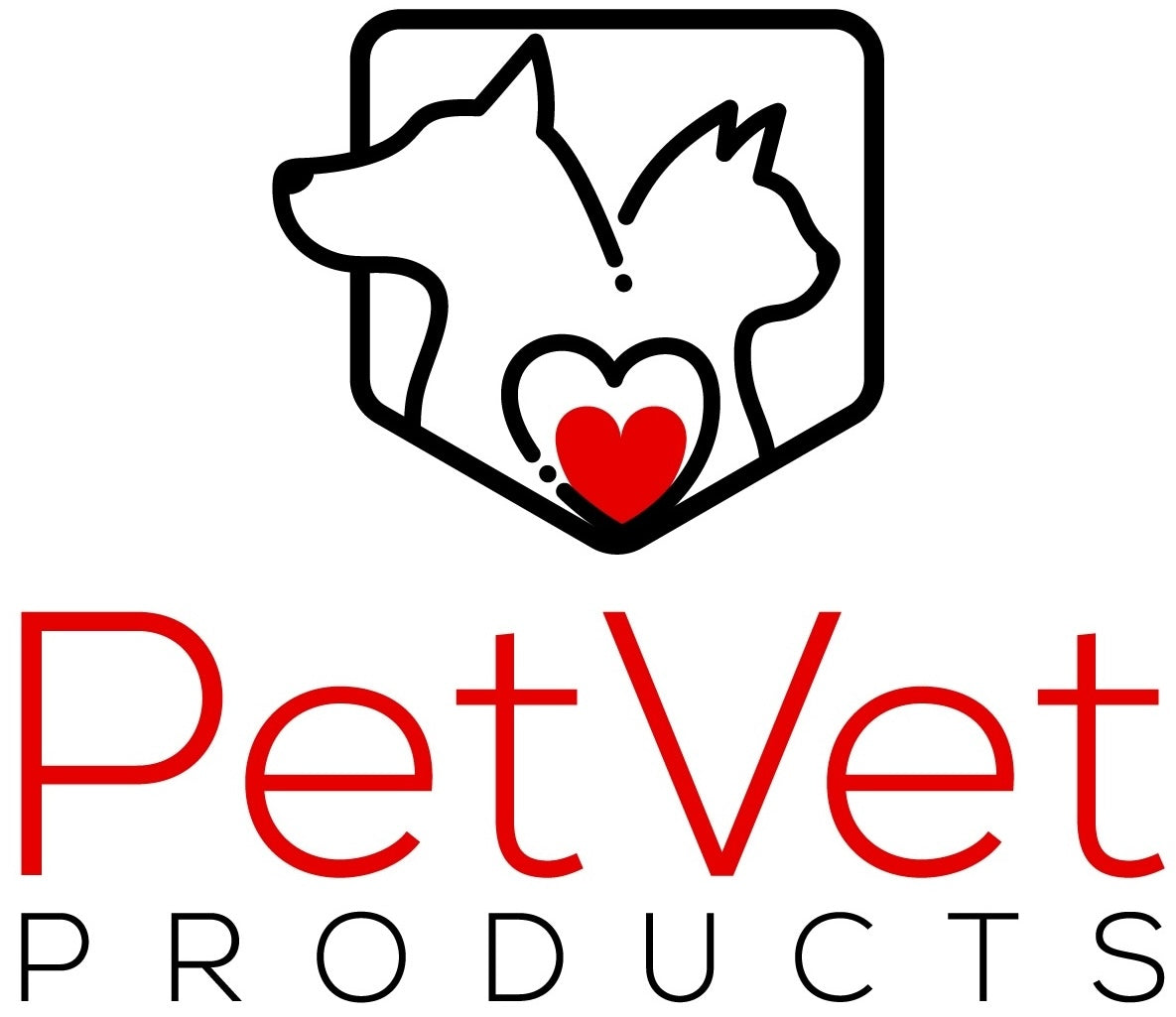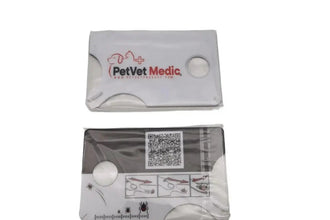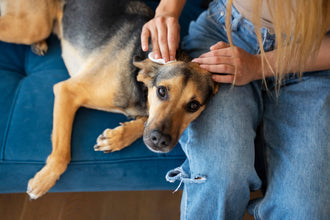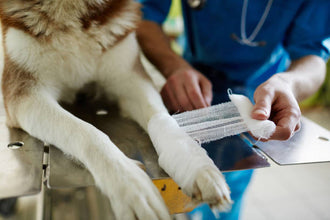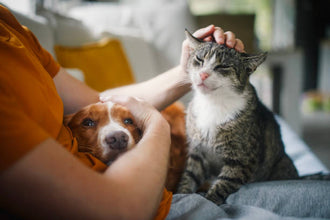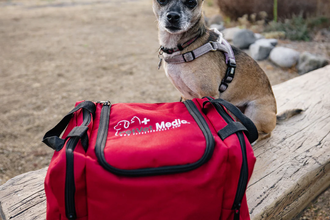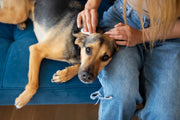
hen your dog gets a bleeding wound, it can be a stressful and worrying experience. However, knowing how to properly manage a bleeding injury at home can help you act quickly and effectively to ease your pet’s discomfort and prevent infection. In this comprehensive guide, you will learn how to treat a bleeding wound on your dog at home, step by step, using the right pet first aid supplies from your first aid kit for pets. Whether you have a minor cut or a scraped paw, this blog will empower you with essential knowledge for effective dog injury treatment.
At petvetproduct.com, we understand how important it is to be prepared for pet emergencies. Our specially curated first aid kits and supplies ensure you have everything needed to provide immediate care and stop bleeding safely.
Understanding Dog Injuries and Bleeding Wounds
Before jumping into treatment, it’s crucial to understand the types of wounds your dog may experience and when professional veterinary help is necessary.
Common Causes of Bleeding Wounds in Dogs
Dogs are naturally curious and active, which makes them prone to various injuries:
-
Cuts and Scrapes: These often happen during outdoor activities, when dogs brush against thorny bushes, broken glass, or sharp rocks.
-
Puncture Wounds: Often caused by animal bites, nails, or sharp objects like sticks.
-
Bite Wounds: Can be deep and prone to infection, especially if from other animals.
-
Accidental Trauma: Such as falling, getting hit by a car, or collisions during play.
Recognizing the nature of the wound can help you decide how to act. Minor scrapes may just need cleaning and bandaging, but deeper wounds require more care.
When to Seek Professional Veterinary Care
Even if you plan to start treatment at home, certain situations require urgent vet attention:
-
If bleeding is heavy and cannot be controlled within 10 to 15 minutes of applying pressure.
-
Wounds that expose underlying muscle, fat, or bone.
-
Injuries caused by animal bites, which carry a high risk of infection.
-
Signs of infection such as swelling, redness, warmth, discharge, or a foul smell.
-
If your dog shows signs of severe pain, weakness, vomiting, or lethargy.
If you notice any of these signs, take your dog to the vet immediately to avoid complications.
Essential Pet First Aid Supplies You Need at Home
A well-stocked first aid kit for pets is a pet owner’s best friend in emergencies. Having the right supplies on hand allows you to start dog injury treatment immediately and efficiently.
What to Include in Your First Aid Kit for Pets
You don’t want to waste precious time searching for supplies when your dog is injured. Your kit should include:
-
Sterile gauze pads and rolls: For applying pressure and covering wounds.
-
Adhesive vet wraps: These are stretchy, breathable bandages that secure dressings without sticking to fur.
-
Antiseptic wipes or sprays: Specifically formulated for pets to clean wounds safely.
-
Styptic powder or pencil: Essential for quickly stopping minor bleeding by helping blood clot.
-
Saline solution: Used for flushing dirt and debris out of wounds.
-
Disposable gloves: Protect both you and your dog from contamination.
-
Tweezers and blunt scissors: To remove foreign objects and trim bandages.
-
Digital thermometer: To monitor for fever, which can indicate infection.
-
Elizabethan collar (cone): To prevent your dog from licking or chewing wounds.
-
Pet first aid guide: Handy instructions for various emergencies.
At petvetproduct.com, our complete first aid kits come with all these essentials, so you don’t have to worry about sourcing them separately.
Why Having the Right Supplies Makes a Difference
Using human first aid supplies on pets is not always safe—some antiseptics and adhesives can irritate canine skin or delay healing. Pet-specific supplies ensure effective treatment tailored for your dog’s unique physiology, reducing the risk of infection and discomfort.
Step-by-Step Guide to Dog Injury Treatment at Home
Now, let’s get into the practical steps for treating a bleeding wound on your dog.
Step 1 – Stay Calm and Assess the Situation
Your dog can sense your emotions. Remaining calm will help keep your dog relaxed, which is important for safe treatment. Approach your dog gently and speak in soothing tones. If your dog is anxious or in pain, use a muzzle or towel to safely restrain them if needed—safety comes first.
Look closely at the wound to assess:
-
Location and size of the wound.
-
How much and how fast it’s bleeding.
-
Whether the bleeding is from an artery (bright red, spurting) or a vein (darker, steady flow).
If the injury looks severe, prepare to seek veterinary care after initial first aid.
Step 2 – Control the Bleeding
Stopping the bleeding quickly is your top priority.
-
Use sterile gauze or a clean cloth from your pet first aid supplies to apply firm, direct pressure to the wound.
-
Maintain pressure for at least 5 to 10 minutes without checking too frequently. Frequent interruptions can disrupt clotting.
-
If bleeding continues, add more gauze on top—do not remove the original pad to check.
-
If you have styptic powder or a styptic pencil in your first aid kit for pets, apply it carefully to minor bleeding spots to promote clotting.
-
For limb wounds, gently elevate the injured area above heart level to reduce blood flow.
-
If bleeding is uncontrollable or severe, get your dog to the vet immediately.
Step 3 – Clean the Wound Properly
Once the bleeding is under control, cleaning the wound helps prevent infection.
-
Flush the wound thoroughly with saline solution or clean lukewarm water. Avoid using tap water if possible.
-
Use antiseptic wipes or sprays formulated for pets to disinfect the wound gently.
-
Avoid using hydrogen peroxide, alcohol, or iodine directly on open wounds—they can cause tissue damage and delay healing.
-
Gently pat the area dry with sterile gauze.
Step 4 – Apply Appropriate Dressings and Bandages
Proper dressing protects the wound and supports healing.
-
Cover the wound with a sterile gauze pad.
-
Wrap the wound with a self-adhesive vet wrap. Make sure the bandage is snug but not too tight; you should be able to slip a finger underneath.
-
For paw wounds, consider using a protective bootie to prevent dirt and licking.
-
Check bandages frequently, especially if they get wet or soiled.
-
Change the bandage at least once daily, or more often if dirty.
Step 5 – Monitor and Maintain the Wound
Healing requires ongoing care.
-
Inspect the wound daily for redness, swelling, pus, or any foul smell—all signs of infection.
-
Prevent your dog from licking or chewing the wound by using an Elizabethan collar if needed.
-
Keep your dog’s activity level low to avoid reopening the injury.
-
Continue cleaning and bandaging as needed until the wound is fully healed or your vet advises otherwise.
Additional Tips for Effective Dog Injury Treatment
Using Your Pet First Aid Guide for Reference
Every pet owner should keep a pet first aid guide accessible, whether printed or digital. These guides provide essential instructions for various emergencies beyond wounds, including choking, poisoning, and heat stroke. You can find excellent resources at petvetproduct.com, which offers detailed, easy-to-follow guides alongside quality first aid kits.
Preventing Future Injuries
Prevention is always better than cure. Some tips to keep your dog safe include:
-
Regularly inspect your home and yard for sharp objects or hazards.
-
Avoid walking your dog in areas with broken glass, thorns, or other dangers.
-
Use a leash and harness to control your dog during walks.
-
Train your dog to avoid dangerous situations, such as aggressive animals or hazardous terrain.
-
Keep your dog’s nails trimmed to reduce accidental scratching injuries.
Conclusion
Knowing how to treat a bleeding wound on your dog at home is a vital skill for every pet owner. With the right preparation and knowledge, you can provide effective dog injury treatment that helps your dog heal faster and avoids complications. Remember that the cornerstone of successful home care is having a complete first aid kit for pets stocked with quality pet first aid supplies from trusted sources like petvetproduct.com.
Always keep calm, follow the step-by-step care routine, and monitor your dog closely. While many wounds can be managed at home, don’t hesitate to seek veterinary care when injuries are severe or healing doesn’t progress as expected. Your dog’s health and well-being depend on timely and proper care.
FAQs About Dog Injury Treatment and First Aid
If bleeding is heavy and doesn’t stop after applying pressure for 10-15 minutes, or if the wound exposes deeper tissues like muscle or bone, contact your vet immediately. Also, wounds caused by bites or showing infection symptoms require prompt veterinary attention.
Some human supplies might be safe, but many are not formulated for dogs and can irritate their skin or cause allergic reactions. Always use pet-specific products like those from petvetproduct.com to ensure safety and effectiveness.
Change bandages daily or as soon as they get dirty or wet. Keeping the wound clean and dry is essential to prevent infection.
Apply firm, continuous pressure with sterile gauze for at least 10 minutes. If bleeding does not stop, get to a vet immediately. Avoid using tourniquets unless advised by a professional.
Visit petvetproduct.com to purchase comprehensive, vet-approved first aid kits for pets and individual pet first aid supplies to keep your furry friend safe.
